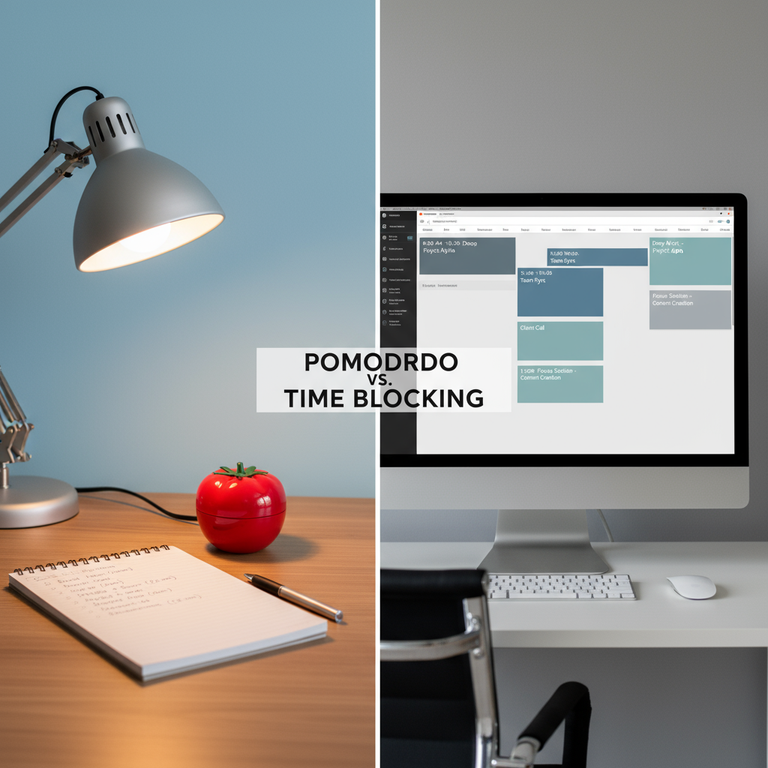How to Create a Weekly “Focus Plan” That Protects Your Time from Interruptions and Meetings
You did the hard work. You completed your “Weekly Review,” identified your “Big 3” priorities, and you have a clear list of what you need to accomplish. You feel organized, in control, and ready. Then, Monday at 9:05 AM hits. An “urgent” email lands. A colleague “just needs five minutes.” A meeting you forgot about pops up. By noon, your beautiful plan is in flames, and you’re back to “firefighting” mode.
This is the most common failure point in productivity. Having a *plan* is not the same as having a *system to execute* that plan. Your most valuable asset is not your time; it’s your *uninterrupted time*. This “deep work” is the only thing that creates real, high-level value. And the modern workplace is a machine designed specifically to destroy it with a non-stop barrage of interruptions and meetings.
You don’t just need a “to-do list.” You need a fortress for your focus. You need a Weekly Focus Plan. This is not just a list of *what* to do; it’s a tactical, defensive strategy for *when* and *how* you will do it, designed specifically to protect your time.
‘Weekly Review’ vs. ‘Weekly Focus Plan’: The Critical Difference
It’s crucial to understand this distinction. The “Weekly Review” (which we covered previously) is the *strategic* component. It’s when you look down from 10,000 feet, assess all your projects, and decide *what* is important.
A Weekly Focus Plan is the *tactical* component. It’s the “on the ground” battle plan. It takes the priorities from your review and builds a defensive perimeter around the time required to complete them. The Review builds the “what”; the Plan defends the “when.” One without the other is useless.
Why Your Calendar Is a Battlefield (And You’re Losing)
For most professionals, the calendar is a passive, public resource. It’s a list of invitations from other people. We let “meeting culture” dictate our entire schedule, and then we try to “fit our real work in the gaps.” This is a losing strategy. The “gaps” are always too small, too fragmented, and at the wrong times of day (when your energy is lowest).
A Weekly Focus Plan flips this model on its head. It treats your calendar not as an “invitation list,” but as a “strategic fortress.” You are the architect. You place your “Big Rocks”—your high-value deep work—*first*. Everything else must fight for the remaining, lower-value time. This is how you protect your time from interruptions and meetings.
How to Create Your ‘Weekly Focus Plan’: A 5-Step Tactical Guide
Take the output from your “Weekly Review” (your list of priorities) and execute this 30-minute planning ritual every Friday afternoon or Sunday evening.
Step 1: Identify Your “Big Rocks” (Your Deep Work)
Look at your priority list. Identify the 2-3 “Big Rock” tasks that, if completed, would make this week a massive success. These are your “deep work” tasks—they require high cognitive load and uninterrupted focus (e.g., “Draft Q4 Strategic Proposal,” “Code the new feature,” “Analyze the marketing data”).
Step 2: Time Block Your “Big Rocks” First
Before you accept a single meeting, open your calendar for the coming week. Find the 2-3 *best* windows of time (ideally 90-120 minute blocks) during your peak energy hours (e.g., 9:00 AM – 11:00 AM). Create calendar events for your “Big Rocks” and label them clearly:
- [DEEP WORK – DO NOT BOOK] – Drafting Q4 Proposal
This is non-negotiable. You are not “hoping” to find time for your most important work; you are *making* time for it. This is the foundation of your Weekly Focus Plan.
Step 3: Block Time for “Shallow Work” (Batching)
This is the secret weapon for managing interruptions and meetings. Most interruptions come from email and chat. You can neutralize them by creating specific “containers” for this shallow work.
Block out 2-3 specific “shallow work” windows on your calendar:
- 11:00 AM – 11:45 AM: “Email & Comms Triage”
- 4:00 PM – 4:30 PM: “Final Inbox Clear”
Outside of these blocks, your email client and Slack/Teams are *closed*. This frees you from the “slot machine” of constant checking and reassures your brain that there is a *planned time* to deal with those messages.
Step 4: Schedule the “Fires” (Buffer Time)
Your plan *will* get hit. A real, unavoidable fire will ignite. A Non-Essentialist’s day is completely derailed by this. An Essentialist *plans* for it. Your Weekly Focus Plan must include “buffer” blocks.
Add one 30-45 minute block every day labeled “FLEX TIME / FIREFIX”. This is your built-in shock absorber. When an “urgent” task appears, it doesn’t break your deep work block; you simply assign it to your “Flex Time” block. If no fires appear, you use this time to get ahead on email or take a break.
Step 5: Make Your Plan Visible and Public
A secret plan is a weak plan. Your final step is to make your calendar public to your team. When a colleague tries to book a meeting over your “DEEP WORK” block, they will *see* that you are in a high-focus session. This transparency does 90% of the defensive work for you. It sets a social contract that your time is valuable and managed.
How to Defend Your ‘Weekly Focus Plan’ in Real-Time
The plan is built. Now you must defend it. Here are the scripts to handle the inevitable interruptions and meetings.
1. When a Meeting Invitation Arrives:
Do not auto-accept. Your job is to be the “gatekeeper” of your time. Before accepting, ask two questions:
- “This looks interesting. So I can prepare, what is the specific agenda and the desired outcome for this meeting?” (This alone will cause 30% of meetings to be canceled and turned into an email).
- “Can this be handled via a quick email/chat instead?”
If the meeting is legitimate but conflicts with your “Deep Work” block, reply with a “Gentle No”:
“I am in a ‘heads-down’ focus block for [Project X] during that time. I’ve already committed that time. I am free at [Your ‘Flex Time’] or [Time After Lunch]. Would one of those work?”
2. When a Digital Interruption Occurs (Slack/Teams):
Your Weekly Focus Plan requires you to be *unavailable* for large parts of the day. This is the hardest part. You must break the “always on” expectation.
- Use your Status: Set your Slack/Teams status to “In Focus Mode until 11 AM – will reply then.”
- Tell Your Team: “To get this project done, I am blocking 9-11 AM every day for deep work. I will be fully offline from chat during that time. If the building is on fire (and only then), please call my cell. Otherwise, I will respond to all messages at 11 AM.”
This trains your colleagues that a “non-urgent” question can wait 90 minutes. And 99.9% of questions are non-urgent.
3. When a Physical Interruption Happens:
If you’re in an office (or a busy home), you need a visual signal. The “Headphones On” rule is the universal sign for “Do Not Disturb.” You can even use a small, physical sign on your desk. When colleagues approach, don’t just give up. Politely defend your block:
“Hey [Name], I’m right in the middle of a deep focus block until 11. Can this wait until then?”
Conclusion: The Only Way to Do High-Value Work
Your ability to create high-value work is directly proportional to your ability to defend your focus. A simple “to-do list” is a “hope” for a good week. A Weekly Focus Plan is a tactical system that *engineers* a good week.
It transforms you from a “firefighter,” who is a slave to their inbox, into an “architect,” who is the master of their schedule. By building this fortress and learning to defend it, you finally protect your time from interruptions and meetings and create the non-negotiable space required to do the work that actually matters.







